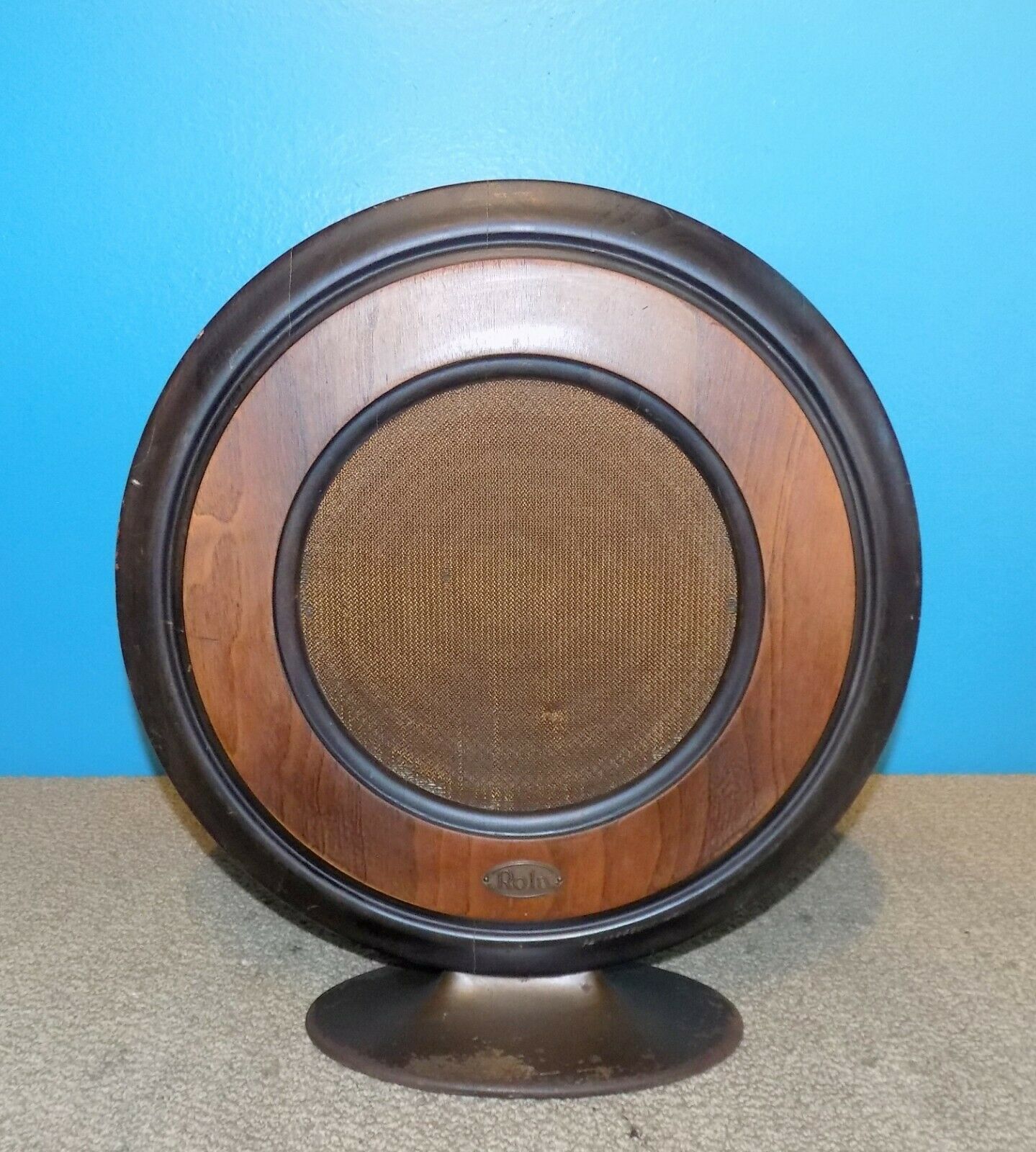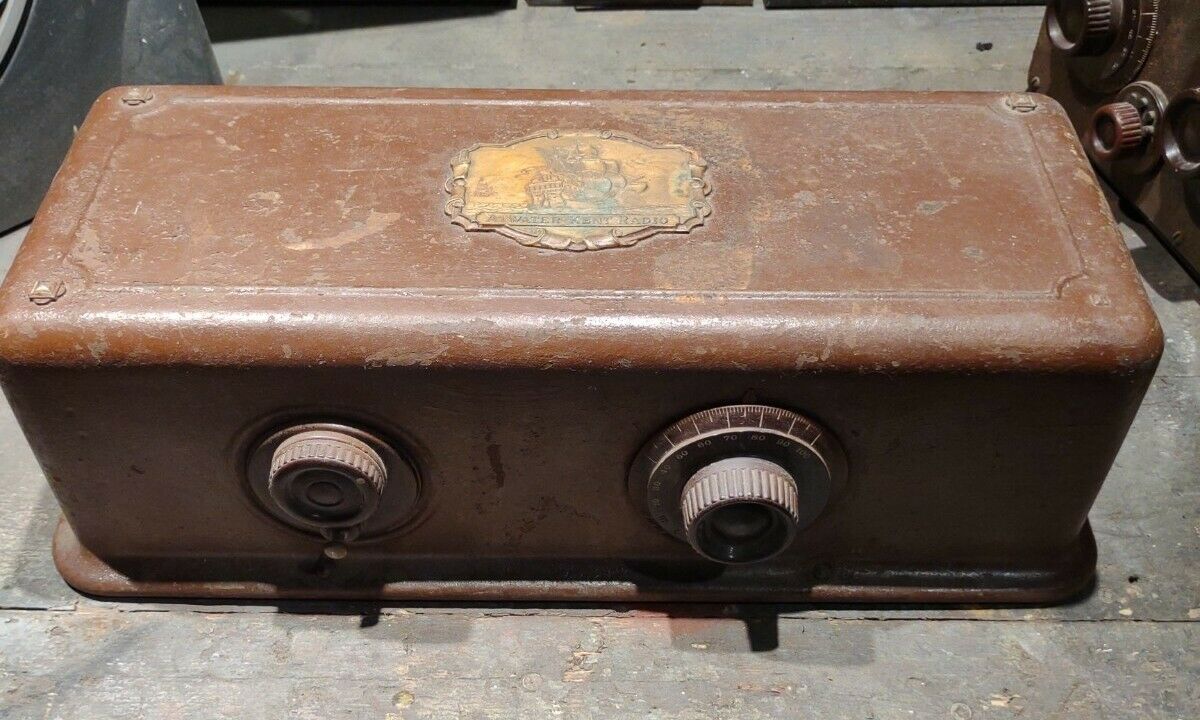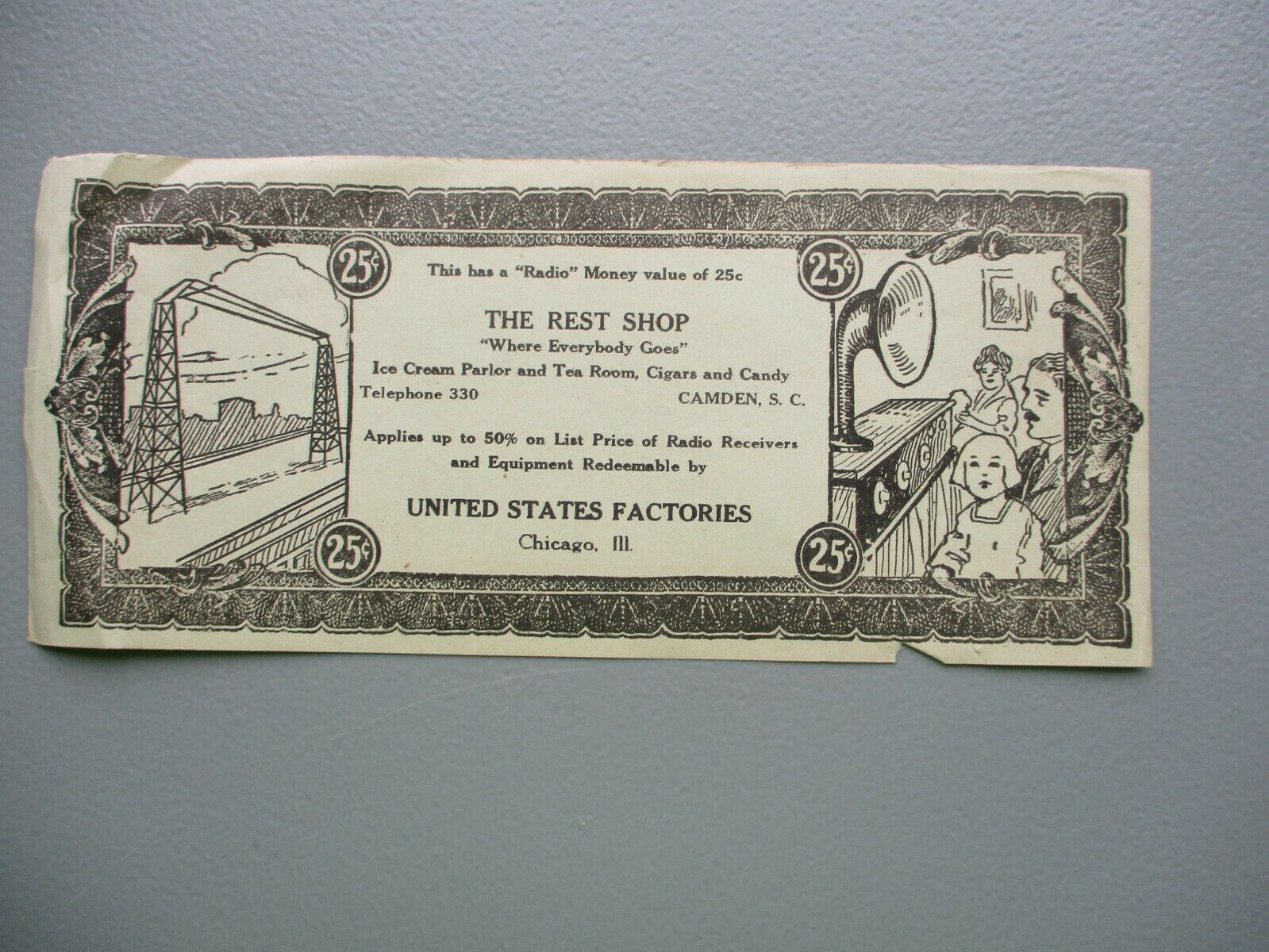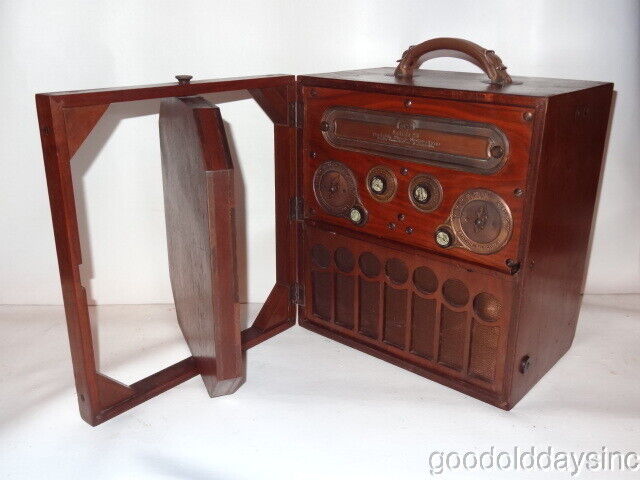-40%
Rare VTG 1937/38 Northern Electric (Bell / Western Electic) Model 626 Tube Radio
$ 132
- Description
- Size Guide
Description
Rare VTG 1937/38 Northern Electric (Bell / Western Electic) Model 626 Tube Radio. Untested being sold as is pictured for parts or repairs. Appears to be complete , for some reason someone decided to write a phone number on the front of the radio - see photo. Other than that the radio is in great shape for its age and would make a great candidate for restoration!Please ask all questions/ address any concerns prior to purchase, no returns!
Note: USA shipping only, excludes shipping to Hawaii, Puerto Rico and Alaska!
Thanks for looking !
Specs:
Country: Canada
Manufacturer / Brand: Northern Electric Co. Ltd.; Canada
Year: 1937/1938 Category: Broadcast Receiver - or past WW2 Tuner
Valves / Tubes 6: 6A8G 6K7G 6H6 6F5 6V6G 5Y4G
Main principle Superheterodyne (common); ZF/IF 470 kHz
Tuned circuits 6 AM circuit(s)
Wave bands Broadcast and Short Wave (SW).
Details
Power type and voltage Alternating Current supply (AC)
Loudspeaker Electro Magnetic Dynamic LS (moving-coil with field excitation coil)
Power out
from Radiomuseum.org Model: 626 - Northern Electric Co. Ltd.;
Northern Electric - A Brief History
Northern Telecom, as it is known by today, marked its 100th anniversary in 1995. Since its modest beginnings in the late 1800s, it has evolved from being a small Canadian telephone equipment supplier to an architect of a world of networks. This achievement is not surprising, however, when you consider its history of anticipating change and taking full advantage of it. Here is a glimpse into the past.
Northern Telecom entered its second century in 1995. The company basically started by accident. An accident of Canadian patent law.
Back in 1881, a former New England sea captain named Charles Fleetford Sise, who had come to Montréal in 1880 to create The Bell Telephone Company of Canada, was writing to Theodore Vail, who was then-president of the National Bell Telephone Company of Boston. Vail was also a major shareholder in the fledgling Canadian telephone business, and would be best-remembered in the history books as the creator of the nationwide American Telephone and Telegraph (AT&T) network.
Sise needed Vail's help. He was worried because his domestic supply of telephone equipment had vanished with the death from tuberculosis of James Cowherd, who operated the world's first telephone manufacturing plant. Sise tried to find other Canadian suppliers, but without success. If he couldn't find an alternative Canadian supplier he would lose the Canadian patent rights. Had it not been for this law, Sise may not have been so determined to start his own manufacturing plant.
"We should ... be doing this work in our own shop, where we have one or two very good workmen," he wrote to Vail. Within months, Sise had hired an experienced foreman from Vail's Boston plant, a man named Charles W. Brown, and rented two floors of a building in Montréal. While a separate company called Northern Electric wouldn't actually exist for another thirteen years, it was conceived with the arrival of Brown, the rental of those two floors, and the creation, in 1882, of the Manufacturing Branch of The Bell Telephone Company of Canada.
The Historical Relationships of
Northern Electric / Western Electric / Bell System / Bell Canada
as told by Claude Sterling - ATCA member #1437
In the good old days, Northern Electric in Canada was a wholly owned subsidiary* of Western Electric. Western Electric in turn was the official manufacturing arm of the Bell System. The Bell System was comprised of a number of operating companies such as Pacific Telephone, Nevada Bell, New Jersey Bell to name a few, as well as AT&T Long Lines. Bell Canada was part of the system as was Bell Labs that did R&D for both the US and Canada.
Sometime in the late 60's or early 70's the Feds determined that the Bell System must divest of the Canadian holdings. Bell Canada ceased to be part of the US Bell System as did Northern Electric. BNR (known as Bell Northern Research) was formed in Ottawa to carry on the work for Bell Canada that was formerly done at Bell Labs.
Northern Electric almost mirrored the WE product line including telephone sets, 1317, 202, 302, 500's to name a few and the unusual "Uniphone" that looked like a 302 turned sideways. It is my understanding that this set was never used by Bell Canada but by the subsidiary holdings such as New Brunswick Tel and Maritime Tel ant Tel. Thus the Canadian and US sets differ only by the label in some cases.
Northern Electric furnished a lot of equipment to the independent companies in the US that wanted WE equipment. Graybar carried the line for some time. NE also made #5 crossbar which was marketed by Stromberg Carlson in the US for the Independent market. At one time, Las Vegas was 100% NE #5 Crossbar.
Another interesting sidelight. When Bell Canada had to separate from Bell Labs, the Canadian folk had been doing a lot of work on digital switching. Someone at Bell Labs made the decision that since everyone knows that voice communication is analog, you Canadians can take your digital research with you.
Western Electric, per se, bit the dust in 1984. Northern Electric test marketed in the US with the SG-1 "Pulse" electronic PBX. One small problem, there already was a company in the US known as Northern Electric that made appliances and other consumer good. Northern Electric restructured as Northern Telecom and entered the US market with the SL-1 digital PBX in competition with the WE Dimension which was Electronic but not fully digital. The SL-1 (Meridian) is alive and well today.
Where are we today? Bell Canada, Northern Telecom (now Nortel Networks) and BNR comprise the "Tri Corporate Structure" of Bell Canada enterprises. Western Electric was absorbed into AT&T which subsequently spun off manufacturing to Lucent. Hence today we have Nortel and Lucent which used to be part of the same organization in fierce competition. As of 2009, Avaya, Inc., which was part of Lucent, acquired Nortel's enterprise phone business. This essentially brings back together two important segments of the once unified phone manufacturing of Western Electric.




















